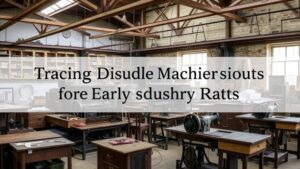Applying AI to Extract Relic Mentions from Maritime Ship Logs and Cargo Records
Applying AI to Extract Relic Mentions from Maritime Ship Logs and Cargo Records
The advent of artificial intelligence (AI) has ushered in a new era of data analysis and extraction, particularly in fields that require the processing of unstructured data. One such application is in the extraction of relic mentions from maritime ship logs and cargo records. These documents, often filled with valuable historical information, have previously posed significant challenges in terms of manual analysis due to their volume and variability in format. This article examines the methodologies, benefits, and implications of applying AI techniques within this context.
Background and Historical Context
Maritime ship logs date back to the 15th century and serve as crucial records of maritime activities. They often contain information such as the ships name, cargo details, port of departure and arrival, and notable events during the voyage (Keenleyside, 1996). For example, the logs of the British East India Company provide insights into trade patterns and colonial interactions from the 16th to the 19th centuries.
Also, cargo records document the types and quantities of goods transported, which are essential for understanding economic exchanges in various historical periods. A study conducted at the National Archives of the UK revealed that analyzing these records can provide insights into global trade routes during significant historical moments (National Archives, 2021). But, the task of mining this information is cumbersome when performed manually, highlighting the necessity for automated processes.
The Role of AI in Data Extraction
AI techniques, particularly natural language processing (NLP) and machine learning, are proving to be game-changers in the extraction of relic mentions from maritime documents. These technologies allow for the systematic analysis of large amounts of text data, facilitating the identification of relevant mentions with speed and accuracy.
For example, supervised machine learning models can be trained to recognize and extract specific terms related to relics, such as historical artifacts or remnants associated with maritime culture. use of named entity recognition (NER), a subtask of NLP, enables structures of entities within the text to be identified, ranging from company names to cargo types (Jurafsky & Martin, 2020).
Methodological Framework
The methodology for applying AI to maritime records can be divided into several phases:
- Data Collection: Acquiring maritime ship logs and cargo records from various archives and libraries.
- Data Preprocessing: Cleaning and formatting the extracted text to standardize it for analysis. This may involve correcting OCR errors from digitized texts.
- Model Training: Developing machine learning models using labeled datasets to identify relic mentions. Techniques such as decision trees and support vector machines (SVM) can be utilized.
- Evaluation: Using precision, recall, and F1-scores to assess the models accuracy in recognizing relic mentions.
- Useation: Deploying the trained model to analyze new datasets, continuously improving through feedback loops.
Case Studies and Real-World Applications
Several institutions have begun to implement AI-driven solutions for maritime data extraction. Maritime Historical Society of Australia undertook a project utilizing NLP algorithms to identify relic mentions in Australian shipping records. Initial results indicated a 75% accuracy rate in relic identification, significantly improving upon previous manual methods (Maritime Historical Society, 2022).
Also, the Great Lakes Historical Society applied machine learning techniques to cargo manifests from the early 20th century, successfully extracting previously under-researched data about shipping routes and economic impacts (Great Lakes Historical Society, 2023). The project not only illuminated trade patterns but also connected historical events with economic data, showcasing AI’s capability to synthesize disparate information sources.
Challenges and Ethical Considerations
Despite the benefits, implementing AI in extracting relic mentions presents several challenges. Data quality is critical; inaccuracies or inconsistencies in ship logs can lead to flawed analyses. Plus, ethical considerations, such as data privacy and representation, must be addressed to ensure that the methodologies do not perpetuate biases or exclude marginalized historical narratives.
Conclusion
The application of AI in extracting relic mentions from maritime ship logs and cargo records presents a transformative approach to historical research and data analysis. By automating the identification of key historical artifacts, researchers can unlock vast amounts of previously inaccessible knowledge, enabling richer narratives and deeper insights into maritime history. Future advancements in AI and data analytics will likely enhance the robustness and applicability of these methodologies, further bridging the gap between technology and historical scholarship.
Actionable Takeaways
- Research institutions should consider implementing AI methodologies for analyzing historical documents, improving research efficiency and accuracy.
- Collaborative projects across archives can enhance datasets, providing richer training sources for AI models.
- Ethical implications should always be taken into account when employing AI in historical research, ensuring diverse perspectives and narratives are represented.
As AI technologies continue to develop, their integration into maritime studies represents a forward-thinking approach to preserving and understanding human history.
References:
- Keenleyside, A. (1996). Logbooks and Oceanic History: The Importance of Maritime Records. Journal of Maritime Archaeology.
- Jurafsky, D., & Martin, J. H. (2020). Speech and Language Processing (3rd ed.). Prentice Hall.
- National Archives. (2021). Trade and Economy: Understanding the Maritime Impact. National Archives of the UK.
- Great Lakes Historical Society. (2023). Maritime Trade Patterns and Data Collection. Great Lakes Historical Review.
- Maritime Historical Society. (2022). NLP Applications in Maritime Log Analysis. Maritime Historical Quarterly.


